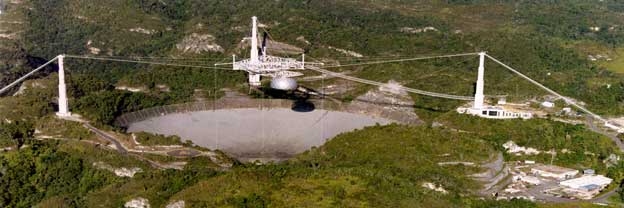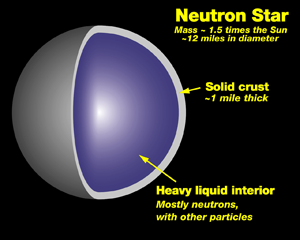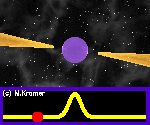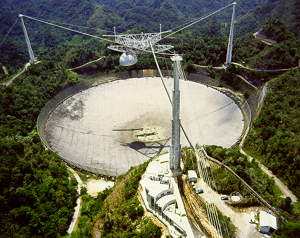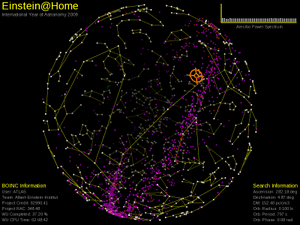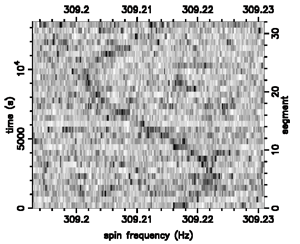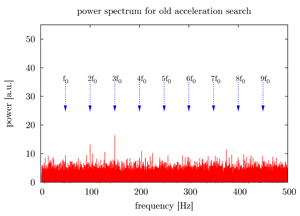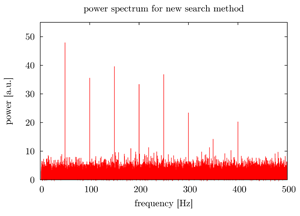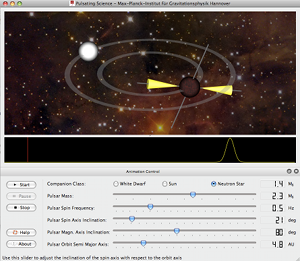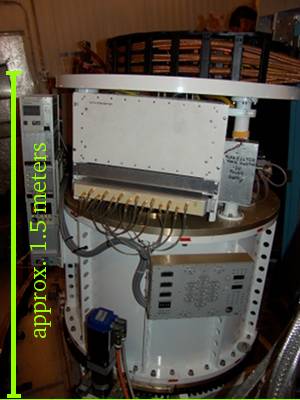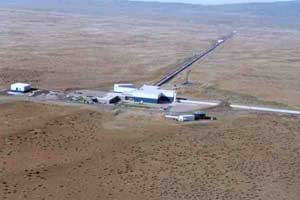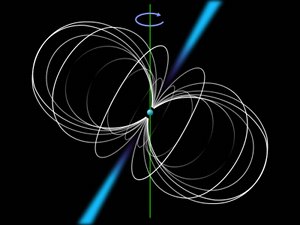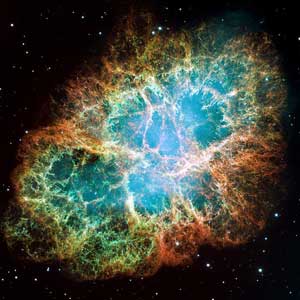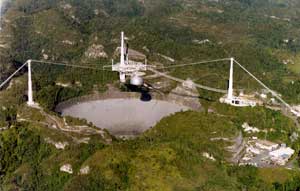Arecibo Binary Pulsar Search:项目背景
Arecibo Binary Pulsar Search 的项目背景
什么是脉冲星?
When a massive star uses up all its nuclear fuel for energy production, it collapses under its own weight. The core of the star gets compressed so much that the protons and electrons within it combine to become neutrons. The resulting object is called a neutron star. (If the neutron star weighs more than two or three solar masses, it collapses further and forms a black hole.)
当一颗恒星用尽了内部所有的核燃料后,它会在自身的重量之下开始坍塌。这时星体的核心会被压缩得非常紧密以至于内部的质子和电子会结合在一起转变为中子。然后就形成了中子星。(如果这颗中子星的质量比大阳的质量还要大两到三倍,那它还会进一步压缩,形成一个黑洞。)
Radio pulsars are neutron stars with an immensely strong magnetic field. They rotate and accelerate electrons in their vicinity to close to the speed of light. These electrons emit polarized light (called coherent curvature radiation) in a narrow cone. When this cone sweeps across the line of sight to Earth, we see the radio emission brighten regularly, just like a lighthouse. Some radio pulsars are also seen in visible light, X- and gamma rays.
射电脉冲星是带有强磁场的中子星。他们会带动其周围的电子旋转并加速到接近光速。这些电子会沿着一个细圆锥状的范围发射出偏振光(称之为相干曲率辐射,Coherent Curvature Radiation)。当这束光扫过地球,我们就能观测到周期性变化的射电信号,就像一个灯塔。有些射电脉冲星还会发射可见光、X 以及伽马射线。
So far, pulsars have been the primary way that neutron stars can be observed. About 1800 of them are known today. Only a tiny fraction of pulsars is in binary systems where their masses can be determined. The known sample is not large enough to determine a firm upper mass limit, which would in turn give more detailed insight into the physics of such extremely dense forms of matter.
目前能够观测到的中子星主要就是脉冲星。其中大约有1800个已经被观测到。而这其中只有很小一部分,因为是处在双星系统中的脉冲星,我们能够确定他们的质量。这些已知的样本还不足以确定一个严格的质量上限,而这个上限可以帮助我们进一步了解这些极高密度的物质的物理特性。
All Pulsars in a Catalogue
脉冲星目录
Browse the ATNF online pulsar catalogue that contains the most recent information on the 1800 known pulsars.
请浏览 ATNF 的脉冲星目录,其中包含了已知的1800颗脉冲星的最新信息。
为什么我们要搜寻双星系统中的脉冲星?
Most pulsars are weak sources and require the use of large radio telescopes to detect them. Astronomers have scanned the complete sky with various telescopes and detected pulsars in the Milky Way and nearby globular clusters. Pulsars in other galaxies are out of reach of our detectors. Most known pulsars were only found by "integrating" their signal: superposing a large number of pulses in a coordinated way to make the actual "pulse" signal stand out from the "static".
大部分脉冲星发出的信号很弱,需要很大的射电望远镜才能探测到他们。天文学家们已经用多种望远镜扫描了整个天空,探测到了银河系内和球状星团附近的脉冲星。而其他星系中的脉冲星超出了我们探测器的探测范围。大部分已知的脉冲星只能通过对它们的信号进行积分'才能找到:对大量的脉冲进行叠加,使得真实的信号可以从背景中分离出来。
This procedure doesn't work as well for pulsars in most short-period binary systems. Since we see most binary systems from the side or inclined, the time-delay between the near and far points of the orbit smears out the signal making it harder to distinguish it from the noise. That's unfortunate since many stars are not solitary but members of a binary system. Thus, a significant fraction of pulsars are being missed in the surveys.
这个过程对大部分短周期的双星系统来说效果并不好。既然我们看到的大部分双星系统都是从侧面或者倾斜的角度,轨道的近点和远地之间的时间差会干扰信号,使其更难从背景中分辨出来。考虑到许多恒星都是双星系统的成员,这实在是很不幸运。因此,这样的调查其实错过了很大一部分的脉冲星。
我们的搜寻是如何进行的?
Our search is a a "blind search". A priori we do not know the exact distance, spin frequency, and orbital parameters of the radio pulsar that might be hidden in a data set. We have to search over a wide range in these parameters to maximize detection probability.
我们的搜索方式是一种”盲目搜索“。因为我们不知道可能隐藏在数据集中的脉冲星的确切距离、自旋频率和轨道参数。我们只能在尽量宽广的参数范围内进行搜索,才能最大程度地增加发现目标的可能性。
Interstellar space is filled with clouds of gas and dust. Some of these clouds have temperatures of about 8,000 K and contain free electrons. These clouds will disperse radio waves travelling through them, meaning that higher radio frequencies arrive earlier than lower ones. The more electrons in the gas along the line of sight, the larger this time-delay. Radio telescopes observe a wide band of radio frequencies, so this dispersion has to be corrected for. Since the exact amount of dispersion depends on the unknown distance to the pulsar and the number of electrons along this distance we correct for 628 trial values of dispersion and search each of the resulting data sets independently. This process is called "dedispersion" and done on the Einstein@Home servers.
星际空间中充满了气体和尘埃组成的云。有一些云的温度大约在 8000K,并且包含有自由的电子。这些云会散射经过它们的射电波,也就是说高频的射电信号会比低频的信号走得更快。气体中沿着视线方向的电子越多,导致的时间差也越大。射电望远镜可以观测到的射频范围很宽,因此必须对这个色散效应进行修正。既然色散的确切程度依赖于脉冲星的距离和这段距离内的电子数量,我们试验性地校正了 628 个色散值,然后独立地对每一个结果集进行搜索。这个过程称之为”去色散“,是由 Einstein@Home 的服务器来完成的。
Since we are ignorant of the orbital parameters of the binary we have to try thousands of possible orbital templates, each corresponding to a different pattern of Doppler spinup and spindown. For each of these templates the data are corrected for the full Doppler effect of the corresponding orbit. This is the first step done on the computers attached to the project. The next step is to test whether there is a radio pulsar present in that data set on that (or a similar) orbit. This is done by using a frequency analysis (Fourier transform) that will recover the spin frequency without smearing.
既然我们不知道双星系统的轨道参数,我们只能尝试上千种可能的轨道模板,每一个都对应不同的多普勒上旋和下旋模式。然后将数据按照每一个模板对应的轨道进行全多普勒效应的修正。这是在加入到我们项目的计算机上完成的第一个步骤。下一步是测试在这个轨道的数据集里是否存在脉冲星。这一步是通过频率分析(傅里叶变换)来完成的,然后就得到了正确的自旋频率。
Because the signals of radio pulsars are not sinusoidal but pulsed, the frequency analysis will show frequency components at the fundamental frequency (the intrinsic spin frequency) and at higher harmonics (integer multiples of the fundamental frequency). Summing these components is a well-known trick in pulsar searches and significantly increases the sensitivity of the search. This summation is the last step done on the users' computers. Finally a list of the most significant candidates is reported back to the Einstein@Home servers and analyzed by the project scientists.
因为射电脉冲星的信号并不标准的正弦波而是脉冲形式的,从频率分析中将得到基频(本征自旋频率)和更高的谐频(频率为基频的整数倍)。对这些频率求和是搜索脉冲星时的常用技巧,能得显著提升搜索的灵敏度。这个求和是在用户计算机上完成的最后的一个步骤。最终,计算机会将最重要的几个候选信号列成表,返回至 Einstein@Home 的服务器,由项目科学家进一步分析。
我们的新搜寻方法和以前有什么不同?
Searches for binary radio pulsars so far were called "acceleration searches" or "sideband searches". The former correct for the varying time-delays by using an approximation of the binary orbit which is valid only if the observation time is much less than the orbital period of the binary system. The latter is efficient only when many binary orbits are visible during the observation time. There is a gap between those methods where both experience a large loss in sensitivity. Our search is using data sets covering 5 minutes of observation. Thus, the acceleration search becomes significantly less sensitive for orbital periods shorter than 50 minutes. The sideband search loses sensitivity for orbital periods longer than 3 minutes.
目前为止对脉冲双星的搜索都称之为”加速度搜索“或者”边频带搜索“。前一种通过近似的双星轨道对时间延迟进行修正,只在观测时间远小于双星系统的轨道周期时才有效。而后一种只在观测时间内能看到许多双星轨道才有效。这两种方法之间有一个间隔,在这个间隔内两种方法的灵敏度都下降很大。我们的搜索所使用的数据集覆盖了 5 分钟的观测时间。因此,加速度搜索对小于 50 分钟的轨道周期不敏感,而边频带搜索对大于 3 分钟的轨道周期也不敏感。
The new search method will close the resulting gap and can correct for binary periods down to 11 minutes, meaning that we can "see" up to half an orbit of such a binary (with its strongly varying Doppler effect). The figures to the right illustrate the progress achieved by using this procedure.
新的搜索方法将填补这个间隔,并能修正小至 11 分钟的轨道周期,这意味着我们能看到这样一个双星系统(其多普照勒效应变化很大)的一半的轨道。本节上面右边的图表明了这个过程所能达到的效果。
Interactive Binary Pulsar Simulation
交互式的脉冲双星模拟
Explore the Doppler effect in a binary pulsar system by downloading the "Pulsating Science" 3D visualisation software. Generate, view, and modify binary pulsar systems and their radio pulsations. The lower picture on the right shows a screenshot from this interactive simulation.
您可以下载一款名为"Pulsating Science"的 3 维可视软件来探索脉冲双星系统中的多普勒效应。通过这个软件,您可以生成、查看和修改脉冲双星系统和它们的射电脉冲。右边的图即为该软件在进行交互式模拟时的一个截图。
Follow the links below to get started and download an executable for your system (3D graphics drivers required):
下载链接如下,请根据自己的系统进行选择(要求安装 3D 显示卡的驱动程序):
我们在搜寻过程中使用的数据从何而来?
We use data from an ongoing survey made with the largest radio telescope in the world, the 305 meter Arecibo Observatory, Puerto Rico. It is equipped with a detector that can observe seven adjacent fields in the sky simultaneously: the Arecibo L-band Feed Array, or "ALFA". The search for pulsars has been one of ALFA's main tasks, carried out by an international, open group of astronomers, the ALFA Pulsar Consortium.
我们使用的数据来源于世界上最大的射电望远镜,位于波多黎各的 Arecibo 观测站,所正在进行的数据采集工作。上面安装的探测器,ALFA(Arecibo L-band Feed Array),可以同时对天空中七块邻近区域进行观测。搜索脉冲星是 ALFA 的主要任务之一,由一个名为 ALFA 脉冲星协会的国际天文学组织负责。
The survey contains 5 minute long observations for each ALFA field in the sky. In these data sets, our pulsar search aims to find binaries with orbital periods longer than eleven minutes.
数据采集工作主要包含对每块 ALFA 区域的长达五分钟的观测。对于得到的数据集,我们负责的脉冲星搜索,目标主要是寻找轨道周期长于 11 分钟的脉冲双星。
Further links
相关链接
The National Astronomy and Ionosphere Center (NAIC). is the research facility that operates the Arecibo telescope.
NAIC(National Astronomy and Ionosphere Center) 是管理和维护 Arecibo 望远镜的研究机构。
The Arecibo telescope photo gallery contains pictures of the telescope from construction to the present time.
Arecibo 望远镜的照片库中包含了从开始建造到现在的望远镜的照片。
A detailed description of the Arecibo telescope can be found here.
关于 Arecibo 望远镜的详细介绍请看这里。
这个子项目对搜寻引力波有帮助吗?
When matter accelerates through space, it changes the curvature of spacetime. These changes propagate through space at the speed of light in form of gravitational waves. The more compact and massive the matter is and the more it accelerates, the more intense are the gravitational waves that are emitted. Therefore, close binary systems with compact components like neutron stars and/or black holes are a strong, continuous source for gravitational waves.
当物质在太空中加速运行时,它会改变时空结构的曲率。这个改变会以引力波的形式,以光的速度在太空中传播。物质的密度越高、质量越大、加速度越大,所发出的引力波也就越强。因此,包含有中子星或黑洞的闭合的双星系统,是很强的连续的引力波源。
With the results from this pulsar search, we improve our understanding of how many binaries with neutron stars may be out there in total. Moreover, we get a set of pulsar binaries with known sky positions and orbital parameters. Pulsars can emit gravitational waves by a variety of mechanisms in the sensitive frequency range of ground-based detectors.The results from the radio pulsar search enable us to carry out so-called "targeted searches" for gravitational waves from binary pulsars in data of the LIGO, VIRGO, or GEO 600 gravitational wave observatories.
有了脉冲星搜索的结果,我们能够进一步了解总共有多少含有中子星的双星系统。进一步,我们能够知道一些有确切位置和轨道参数的脉冲双星。脉冲星能够通过多种机制发射引力波,而且正好是在地基探测器的比较灵敏的频率范围内。从脉冲星搜索得到的结果使得我们可能在搜索 LIGO、VIRGO 或是 GEO600 引力波观测站采集到的数据时,对来自脉冲双星的引力波进行”有目的的搜索“。
Furthermore, these new pulsars can serve as calibration sources for the gravitational wave space observatory LISA which should be launched by the end of this decade. Here, the gravitational waves emitted from the orbital motion in the mHz range would be detectable.
更进一步,这些新的脉冲星可以能被近几年就要发射升空的 LISA 太空观测站用来做校准源。在 LISA 上面,这些轨道运动所发出的兆赫兹范围的引力波可以被探测到。
Gravitational Wave Observatories
引力波观测站
我们可以从脉冲星中了解什么?
Since their discovery in 1967 by Jocelyn Bell and Anthony Hewish in Cambridge, UK, radio pulsars are one of the most exciting fields of astronomical research. Although there is a basic understanding of how they work, many details of the physical processes have yet to be determined. For example: how many charged particles are accelerated by the ultra-strong magnetic field? What kind of particles are they? How exactly do they move? At what distance from the neutron star's surface is the radiation created that the radio observatories detect?
自从 1967 年由英国剑桥大学的 Jocelyn Bell 和 Anthony Hewish 发现了射电脉冲星后,射电脉冲星已经成为天文学中最激动人心的研究领域之一。虽然对于它们的运行机理已经有了基本的了解,但许多具体的物理细节还有待发现。比如说:有多少带电粒子被其超强的磁场所加速?都是些什么粒子?它们具体是如果运行的?我们观测到的射电信号是在离中子星表面多远的距离上生成的?
And more mysteries are buried below the surface: what is the interior composition of such an object? Is there a core that consists not of neutrons but of their constituents, the quarks? Our new project should help to answer these questions. Moreover, these fascinating objects are of interest not only to astrophysicists but also to nuclear and particle physicists.
还有更多的问题埋藏在表面之下:这些物体的内部组成是什么?其中心是否有一个不是由中子而是由更基本的粒子比如夸克所组成的核心?我们的新项目应该能够帮助解答这些疑问。还有,不仅是天体物理学,还有核物理、粒子物理学也对这些迷人的物体很感兴趣。
Astronomers will be interested in the new information regarding the population of pulsars, and hence neutron stars, as remains of supernova explosions. Is the current understanding correct or is there a surplus of either pulsars in binaries or those that were kicked out of the pairs through asymmetries in the stars' final blow ups? With this information, supernova models can be tested or refined, what, in return, tells how strong the gravitational wave emission of such an event should be and how such signals should be shaped.
天文学家们将对脉冲星以及中子星,这一超新星爆炸后的残留物的分布信息感兴趣。当前的理解是否正确?如果脉冲星不处在双星系统中,是否就一定是在爆炸过程中从双星系统中分离出来的?有了这些信息,就可以测试并修正超新星的模型,有了这个,就能知道这类事件所发出的引力波的强度以及波形。
如果你们的计算机发现了有趣的结果,将会发生什么?
If the analysis of a particular set of workunits looks promising and shows clear or faint signs of the form shown above, the target is entered on a "candidate list". From time to time, this list is submitted to the PALFA Consortium for review. If the Consortium finds the respective target promising, too, it schedules a dedicated follow-up observation for this object.
如果在分析某个特定的任务包时发现了符合上文所描述的形式的信号,这个结果将归类到一个”候选列表“。然后这个列表将不定期地提交到 PALFA 协会进行审查。如果协会也认为这些结果有希望,就会针对这些结果安排专门的观测。
Once the new data is obtained, it is being analyzed using the method described above. With a much longer observation time than in the survey, the follow-up observation should show whether a new pulsar has been found or not with a very high level of confidence.
一旦得到了新的数据,还是用上文描述的方法进行分析。因为这次的观测使用了更长的时间,应该可以得出结论,即是否找到了一颗新的脉冲星,或者只是巧合。
The handful of users, on whose computers the initial data analysis was performed that found the candidate with the highest significance, will be credited in the acknowledgements section of the scientific discovery paper.
对于找到了这些信号的计算机所属的用户,将在正式发表的科学刊物中的致谢部分被提及。
相关链接
- Einstein@Home 官方网站上关于 Arecibo Binary Pulsar Search 子项目 的介绍。
